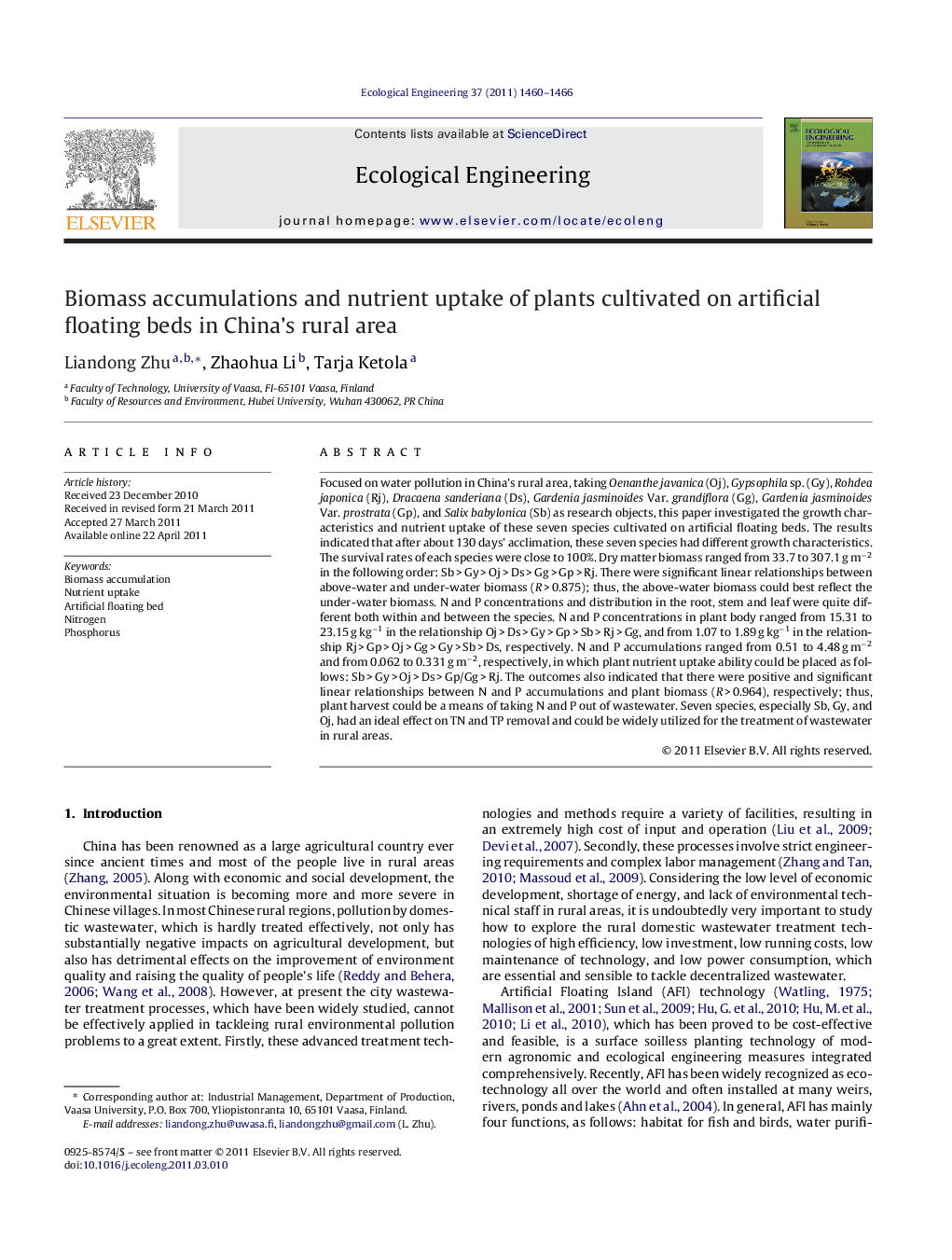| کد مقاله | کد نشریه | سال انتشار | مقاله انگلیسی | نسخه تمام متن |
|---|---|---|---|---|
| 4390266 | 1305164 | 2011 | 7 صفحه PDF | دانلود رایگان |
عنوان انگلیسی مقاله ISI
Biomass accumulations and nutrient uptake of plants cultivated on artificial floating beds in China's rural area
دانلود مقاله + سفارش ترجمه
دانلود مقاله ISI انگلیسی
رایگان برای ایرانیان
کلمات کلیدی
موضوعات مرتبط
علوم زیستی و بیوفناوری
علوم کشاورزی و بیولوژیک
بوم شناسی، تکامل، رفتار و سامانه شناسی
پیش نمایش صفحه اول مقاله

چکیده انگلیسی
Focused on water pollution in China's rural area, taking Oenanthe javanica (Oj), Gypsophila sp. (Gy), Rohdea japonica (Rj), Dracaena sanderiana (Ds), Gardenia jasminoides Var. grandiflora (Gg), Gardenia jasminoides Var. prostrata (Gp), and Salix babylonica (Sb) as research objects, this paper investigated the growth characteristics and nutrient uptake of these seven species cultivated on artificial floating beds. The results indicated that after about 130 days' acclimation, these seven species had different growth characteristics. The survival rates of each species were close to 100%. Dry matter biomass ranged from 33.7 to 307.1 g mâ2 in the following order: Sb > Gy > Oj > Ds > Gg > Gp > Rj. There were significant linear relationships between above-water and under-water biomass (R > 0.875); thus, the above-water biomass could best reflect the under-water biomass. N and P concentrations and distribution in the root, stem and leaf were quite different both within and between the species. N and P concentrations in plant body ranged from 15.31 to 23.15 g kgâ1 in the relationship Oj > Ds > Gy > Gp > Sb > Rj > Gg, and from 1.07 to 1.89 g kgâ1 in the relationship Rj > Gp > Oj > Gg > Gy > Sb > Ds, respectively. N and P accumulations ranged from 0.51 to 4.48 g mâ2 and from 0.062 to 0.331 g mâ2, respectively, in which plant nutrient uptake ability could be placed as follows: Sb > Gy > Oj > Ds > Gp/Gg > Rj. The outcomes also indicated that there were positive and significant linear relationships between N and P accumulations and plant biomass (R > 0.964), respectively; thus, plant harvest could be a means of taking N and P out of wastewater. Seven species, especially Sb, Gy, and Oj, had an ideal effect on TN and TP removal and could be widely utilized for the treatment of wastewater in rural areas.
ناشر
Database: Elsevier - ScienceDirect (ساینس دایرکت)
Journal: Ecological Engineering - Volume 37, Issue 10, October 2011, Pages 1460-1466
Journal: Ecological Engineering - Volume 37, Issue 10, October 2011, Pages 1460-1466
نویسندگان
Liandong Zhu, Zhaohua Li, Tarja Ketola,